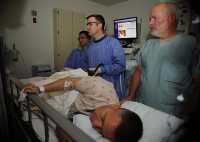Author Interviews, Dermatology, Stem Cells, Surgical Research / 01.06.2020
Photoaged Skin Therapy with Adipose-Derived Stem Cells
MedicalResearch.com Interview with:
Charles-de-SáM.D., Ph.D.
Rio de Janeiro, Brazil
MedicalResearch.com: What is the background for this study?
Response: Our clinical trial was based on our clinical skin observations in areas submitted to a lipotransfer previously, an ordinary practice in plastic surgery. These clinical observations lead us to investigate what will be the key element played in these findings. Our scientific support investigation addressed the Dardick1and Zuk, P2 studies, that demonstrated fibroblastic-like cells in adipose tissue with regenerative ability. Our clinical trial proposal is to investigate the adipose-derived stem cell (ADSC) role in the photoaged skin. The direct endpoint of the study was to assess the histological benefits provided by the subdermal ADSC injection. Mesenchymal stem cells were obtained from lipoaspirates, expanded in vitro, and introduced into the facial skin of 20 patients submitted after three to four months to a face-lifting surgery. In the retrieved skin, immunocytochemical and ultrastructural analysis quantified elastic matrix components, cathepsin-K, metalloprotease MMP-12, and the macrophage M2 markers: CD68, CD206 and heme-oxygenase-1.An overview of the trial steps is described in the infographic.
(more…)






























